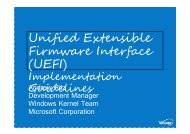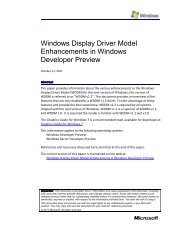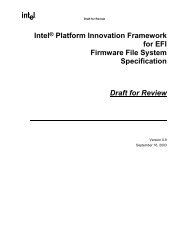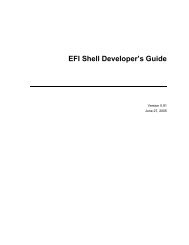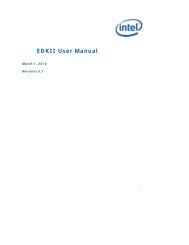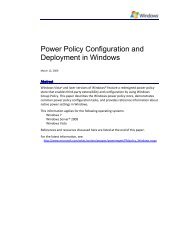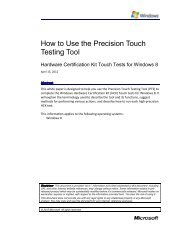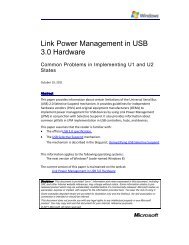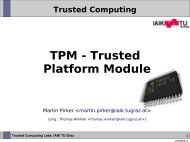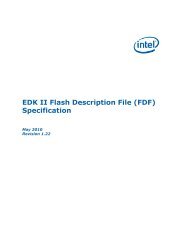SetupDesignGuide.pdf - Firmware Encoding Index
SetupDesignGuide.pdf - Firmware Encoding Index
SetupDesignGuide.pdf - Firmware Encoding Index
You also want an ePaper? Increase the reach of your titles
YUMPU automatically turns print PDFs into web optimized ePapers that Google loves.
Setup Design Guide<br />
DRAFT<br />
2.1.5 HII Database<br />
The Human Interface Infrastructure Database is the resource that serves as the repository of all the IFR,<br />
String, and Font data for the system. Drivers that contain information which is appropriate for the<br />
database will export this data to the HII Database.<br />
In a typical system, one might expect a driver which contains all the motherboard specific data<br />
(traditional F1-setup for the system). Additionally, there might be other add-in cards that contain their<br />
own drivers which have their own set of setup related data. All of the drivers that contain setup related<br />
data would export their information to the HII Database.<br />
Human Interface Infrastructure<br />
Database<br />
Consists of IFR/String/Font<br />
Which has been submitted by varying EFI drivers<br />
EFI Driver<br />
EFI Driver<br />
EFI Driver<br />
2.1.6 Configuration Driver<br />
The EFI Configuration Driver is the program that reads the contents of the HII Database and interprets<br />
the data to present it to the user. This is also the program that takes the user input and provides for a<br />
mechanism to save the changes into an NVRAM location.<br />
Human Interface Infrastructure<br />
Database<br />
Consists of IFR/String/Font<br />
Which has been submitted by varying EFI drivers<br />
EFI Driver<br />
EFI Driver<br />
EFI Driver<br />
EFI Configuration Driver<br />
Provides User Interface Support<br />
Callable by a Protocol Interface<br />
2.2 Composition of VFR and String data<br />
VFR has several keywords which determine the type of functions presented to the user. These<br />
keywords reference strings via tokens, which make them language agnostic.<br />
The strings are broken into language sections which have a one-to-one parallelism between each of the<br />
strings. For instance, if string token #3 is the equivalent of “I love bananas” in the English section,<br />
token #3 in any of the other language sections will contain strings that have the same meaning.<br />
16



